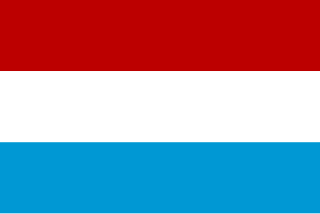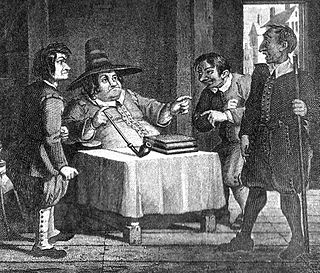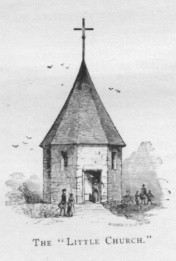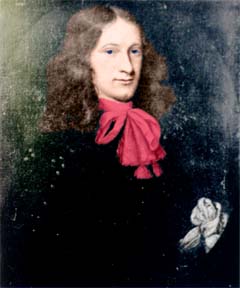Related Research Articles

New Amsterdam was a 17th-century Dutch settlement established at the southern tip of Manhattan Island that served as the seat of the colonial government in New Netherland. The initial trading factory gave rise to the settlement around Fort Amsterdam. The fort was situated on the strategic southern tip of the island of Manhattan and was meant to defend the fur trade operations of the Dutch West India Company in the North River. In 1624, it became a provincial extension of the Dutch Republic and was designated as the capital of the province in 1625.

New Netherland was a 17th-century colony of the Dutch Republic that was located on what is now the east coast of the United States. The claimed territories extended from the Delmarva Peninsula to southwestern Cape Cod, while the more limited settled areas are now part of New York, New Jersey, Delaware, and Connecticut, with small outposts in Pennsylvania and Rhode Island.

Kiliaen van Rensselaer was a Dutch diamond and pearl merchant from Amsterdam who was one of the founders and directors of the Dutch West India Company, being instrumental in the establishment of New Netherland.

Fort Orange was the first permanent Dutch settlement in New Netherland; the present-day city of Albany, New York developed at this site. It was built in 1624 as a replacement for Fort Nassau, which had been built on nearby Castle Island and served as a trading post until 1617 or 1618, when it was abandoned due to frequent flooding. Both forts were named in honor of the Dutch House of Orange-Nassau. Due to a dispute between the Director-General of New Netherland and the patroonship of Rensselaerswyck regarding jurisdiction over the fort and the surrounding community, the fort and community became an independent municipality, paving the way for the future city of Albany. After the English reconquered the region they soon abandoned Fort Orange in favor of a new fort: Fort Frederick, constructed in 1676.

Wouter van Twiller was an employee of the Dutch West India Company and the fourth Director of New Netherland. He governed from 1632 until 1638, succeeding Peter Minuit, who was recalled by the Dutch West India authorities in Amsterdam for unknown reasons.
Nicholaes DeMeyer was the ninth mayor of New York City, in the English colony of New York. He was appointed mayor by Governor Edmund Andros on October 14, 1676 and served until 1677.
Harmen Jansen Knickerbocker was a Dutch colonist associated with the settlements of Albany, Schaghticoke, Red Hook and Tivoli and in New Netherland. It appears to be the case that he never used the surname Knickerbocker, as we know it, during his own lifetime; that he went by a variety of surnames including Van Bommel, and the variety of forms that would evolve into Knickerbacker towards the end of his life, and Knickerbocker after his death. There is no evidence that either Knickerbacker or Knickerbocker are Dutch surnames, and it's possible that the Knickerbocker name may have been a nickname, or that it evolved out of one. Very occasionally the name Van Wye or Van Wijhe appears as part of the evolving name, or in addition to it, and Van Alstyne says this indicates he came from Wijhe.

The Manor of Rensselaerswyck, Manor Rensselaerswyck, Van Rensselaer Manor, or just simply Rensselaerswyck, was the name of a colonial estate—specifically, a Dutch patroonship and later an English manor—owned by the van Rensselaer family that was located in what is now mainly the Capital District of New York in the United States.

James Riker was a New York historian and genealogist. His father, James Riker (Snr) was a merchant and landowner descended from early Dutch settlers. Riker left school at the age of sixteen to work in his father's business.

New Netherland was the 17th century colonial province of the Republic of the Seven United Netherlands on the northeastern coast of North America. The claimed territory was the land from the Delmarva Peninsula to southern Cape Cod. The settled areas are now part of the Mid-Atlantic states of New York, New Jersey, and Delaware, with small outposts in Connecticut and Pennsylvania. Its capital of New Amsterdam was located at the southern tip of the island of Manhattan on the Upper New York Bay.
Johan van Rensselaer also Johannes van Rensselaer, second patroon of the Manor of Rensselaerswyck, was the eldest son of Kiliaen van Rensselaer, and his only son by his first wife, Hillegonda van Bylaer.
Joris Jansen Rapelje was a member of the Council of Twelve Men in the Dutch West India Company colony of New Netherland. He and his wife Catalina (Catalyntje) Trico (1605–1689) were among the earliest settlers in New Netherland.

Voorleser was the title given to a highly responsible citizen in New Netherland and later Dutch colonies, who had semi-official duties in local law, education and religion.
William or Willem Dervall was a Dutch-born Mayor of New York City from October 17, 1675 until October 14, 1676.
Johannes Pieterse van Brugh (1624–1697) was one of the early settlers of New Netherland and is the progenitor of the Van Brugh family in the United States. He was prominently connected with the Dutch West India Company as a fur and timber trader in both Rensselaerswyck and New Amsterdam.

Jochem Pietersen Kuyter was an early colonist to New Netherland, and one of the first settlers of what would become Harlem on the island of Manhattan. He became an influential member of the community and served on the citizen boards known as the Twelve Men, the Eight Men and the Nine Men.

Wilhelmus Hendricksen Beekman — also known as William Beekman and Willem Beekman — was a Dutch immigrant to America who came to New Amsterdam from the Netherlands in the same vessel with Director-General and later Governor Peter Stuyvesant.

Andries Hudde (1608–1663) was a landowner and colonial official of New Netherland.
Johannes Megapolensis (1603–1670) was a dominie (pastor) of the Dutch Reformed Church in the Dutch colony of New Netherland, beginning in 1642. Serving for several years at Fort Orange on the upper Hudson River, he is credited with being the first Protestant missionary to the Indians in North America. He later served as a minister in Manhattan, staying through the takeover by the English in 1664.
Abraham Gouverneur was a Dutch born colonial American merchant and Leislerian politician who served as the Speaker of the New York General Assembly.
References
- ↑ The New York Genealogical and Biographical Record. William B. Van Alstyne, M.D. Jan 1908 p. 36
- ↑ Baptism record of Joannes, son of Jores Dijcman and Aeltje Paules in the Nieuwe Kerk, at the Amsterdam City Archives
- ↑ Harlem (City of New York): Its Origin and Early Annals. James Riker 1881
- ↑ Harlem (City of New York): Its Origin and Early Annals. James Riker 1881
- ↑ Van Laer, A.J.F, ed. (1920). Minutes of the Court of Fort Orange and Beverwyck 1652-1656. I. The University of the State of New York. p. 12.
- ↑ The New York Genealogical and Biographical Record. William B. Van Alstyne, M.D. Jan 1908 p. 36
- ↑ Harlem (City of New York): Its Origin and Early Annals. James Riker 1881